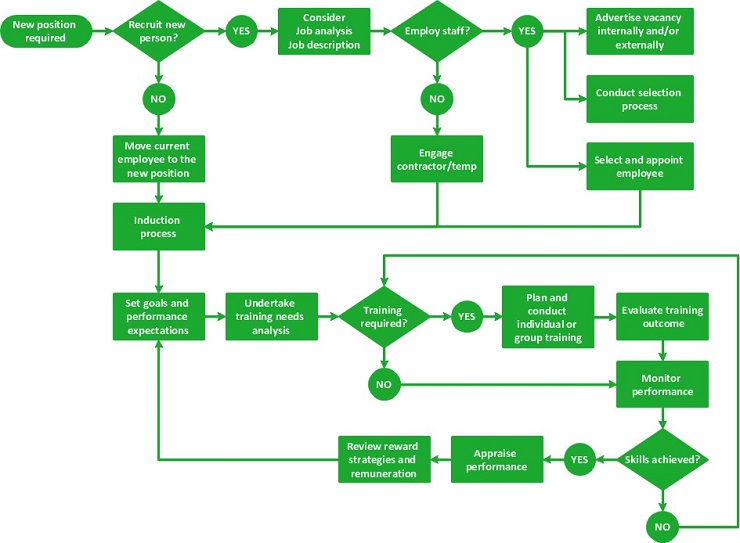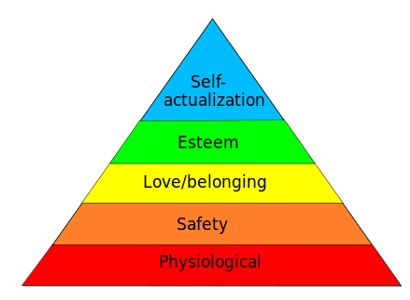Compare different theories of motivation
Assignment- Critical Analysis
Critically compare different theories of motivation using examples from the literature and your own experience.
The report contains the processes of human resource management and the concept of motivation associated with them. The report portrays the use of motivational theory to build up an individual’s sense of achieving its goals while setting them according to his/her desires and instincts. Being motivated means higher productivity, improvement and timely achievement of one’s goals.
Introduction to Human Resource Management
Human resource is one of the critical and most important resources for any organization. Human resource management is the structured policy to manage people in any organization that starts from the hunting of resources towards the selection, recruitment and retaining those resources for efficient productivity. Every organisation has objectives and goals to achieve. Thus, these objectives and goals could be achieved when we have right people for the right job in the organization. This could be possible by aligning people policies with the goals and objectives of the management. Human Resource Management focuses on managing the employees of the business with respect to add and retain the human capital that in turn raises a good amount of ‘Intelligent Quotient and Emotional Quotient’ in an organization.
HR processes: It could be well derived that HR processes involves the following steps:
- Hunting for the right resource
- Scrutinizing the application
- Selecting the candidate
- Describing the role and conduct of the job along with the proper description.
- Finalizing the remuneration and other benefits
- Recruiting the employee
- Induction and orientation
- Training (If desired)
- Performance measurement on the basis of various parameters
- Measures to retain the employees.

Source: http://www.conceptdraw.com/examples/hr-management-flow-chart
Practice of HRM is effective only if it’s integrated with overall organisation strategy and provides better returns in terms of profits associated with the cost spent on the recruitment, training and other benefits attributed to an employee. HRM practice and policy design should ensure that the firms utilise talent of their employees to the fullest.
Concepts of HRM: Motivation and Job satisfaction
Motivation is the concept within the arena of human resource that is directly linked to the career of an employee (London, 1983), efforts (Houkesa, Janssena, de Jongeb, & Nijhuisa), and the income level (Eisenberger, Rhoades, & Cameron, 1999). Job satisfaction and the performance of employees are interlinked as if when the employees will be satisfied, their performance will be better (Judge, Thoresen, Bono, & Patton, 2001). Job satisfaction is also linked with the turnover of the company as the company will grow when the employees perform better (Mobley, 1977), personality of an employee (Judge, Heller, & Mount, 2002), and the work commitment that will make them more efficient (Morrow & McElroy, 1987) and reflective among others.
Motivation: Meaning and types
There is a difference between the motivated employee and a happy employee in terms of desires and outcomes. It is possible that the motivation leads to happiness or vice versa, but there may be another scenario where a happy employee is not at all motivated to achieve more. In this case, happiness is related to satisfaction. Motivation is attributable to the employee’s inner instinct to achieve something, to perform better and to achieve the sense of self-esteem. Motivation leads to the increase in:
- Employee’s productivity
- Workplace performance
- Communication and coordination with other employees
- Organization’s turnover
- Employee’s salary and perks
- And most importantly job satisfaction
Motivation could be characterized as intrinsic or extrinsic. But, before explaining these two concepts of motivation, I would here consider a real time scenario in any organization. There are two types of employees, one who are motivated to attain their self-esteem and to do something for their career and emotions and the other ones who want monetary rewards or some compensation in terms of promotions, perks and higher salaries in lieu of their efforts and hard work. This is the scenario in every organization but the extrinsic motivation is more prevalent in today’s materialistic world.
Intrinsic Motivation
Intrinsic motivation is the motivation that comes from inside for every individual. It is not attributed to some rewards or benefits; rather it is the mirror image of one’s self esteem and goals to achieve something. When an individual desires something out of curiosity, hobby and self-reliance, the driving force is his/her intrinsic motivation.
Extrinsic Motivation
The external motivation comes from the external influences like higher salary, better perks and benefits, recognition, promotions and team leading opportunities that adds up to many more status prone benefits. The employees who are driven by the extrinsic motivation always demands some compensation and benefits in lieu of the efforts and hard work they have put in for the job. Thus, extrinsic motivation is not self-driven but we can say ‘perks driven’.
Theories of Motivation and comparison
Maslow's hierarchy of needs
The Maslow’s hierarchy of needs theory is one of the most recognized theories of motivation that was propounded by Abraham Maslow in 1943 in his paper "Theory of Human Motivation".

According to Maslow’s theory of motivation, there are five levels of the attainment of motivation within an individual. The first level is attributed towards the attainment of the basic needs and priorities. When an individual attains its physiological needs, it strives to attain the social security and financial security to keep surviving. After the job, social and financial security is maintained; the individual gets motivated to attain the love and belongingness by making friends and social circle. After that the individual strives to attain its self-esteem through satisfaction and self-respect with the aim to attain the self-actualization where the individual has attained almost everything with respect to its goals and objectives.
If I relate this theory to my own motivation level and the stage where I really am, then I would only say that I am still struggling to get my basic needs accomplished to the fullest. As a student, I have not stepped forward from stage one. Attaining all the levels of motivation is a far story but I can relate myself of attaining it in future as it is being driven inside me to be self-realised and fulfilled.
Goal-setting Theory
The goal setting theory was developed by Locke through his contribution towards ‘Toward a Theory of Task Motivation and Incentives’, Organisational Behaviour and Human Performance, 3 (1968), pp 157-89).
The goal setting theory states that every individual has some predetermined goals in their lives to be achieved. These goals are the driving factors for one’s motivation level and the pace of motivation to achieve those goals, being reflected in their behaviours. To keep motivated and to remain in that pace of goal setting and achieving, one needs feedback that keep addresses that individual regarding their acts and behaviour towards goal attainment. Critical analysis of one’s acts and work formulates and base for improvement and higher productivity that in turn leads to higher motivation. That is why, the goal setting theory is attributed towards identifying and setting one’s goals, formulates work plan and trigger the motivation to attain those goals.
Associating myself with this theory, I would relate it to the goals of achieving high grades and a successful completion of my degree that in turn will aid in providing me a better job. All these goals are to be attained by me and I could definitely relate them to the motivation that I get from the urge and need to attain these goals.
Therefore, setting goals will definitely add up to our motivation and productivity to better achieve them.
Comparison between the two theories
When we talk about the theories of motivation, we can easily refer that all the theories focuses on attainment of goals.
So, talking about the Maslow’s theory, the goals are in the shape of five levels of self-attainment that drives motivation and productivity within an individual. These levels are more dominated by the intrinsic level of motivation (Ryan, Deci, 2000). It is also referred that the self-determination theorise are founded on the basis of Maslow’s hierarchy needs (Feldman, 2011).
Another theory is ‘Goal setting theory’ that also focuses on attainment of goals and the motivation is driven intrinsically and extrinsically towards goal attainment. But, the only difference in this theory is that the goals are not predefined but has to be defined by an individual according to its own perspectives and desires. While setting goals, the individual should well consider that the goals should be measurable, identifiable, specific and attainable and time related.
As an individual, I can relate my goals by setting them through observation and experience specifically with the five levels of hierarchy needs and working towards aggressively, being motivated to achieve them in the set time period.
Conclusion
Motivation is very essential and different theories could be suitable as per the situations. Organisations should have capable and sensible HR professionals who can analyse the situation and adapt suitable theory to find a solution. It should be made an integral part of the HR system in an organization where different theories of motivation could be applied in day to day tasks to boost up the morale and productivity of the employees. But, before that finding the right people for the right job at the right time is needed and should be managed. This is regarded as the biggest role of the human resource management with a contribution of motivation as an integral part to make the performance efficient and effective for the employees. As it is always said that, ‘there is a difference between a happy employee and a motivated employee’.
References:
- com. (2017). Theories of Motivation | Human Resource Management. [online] Available at: http://hrmpractice.com/theories-of-motivation/ [Accessed 31 Mar. 2017].
- azcentral.com. (2017). Cite a Website - Cite This For Me. [online] Available at: http://yourbusiness.azcentral.com/motivational-theories-human-resources-managers-16742.html [Accessed 31 Mar. 2017].
- Szalma, J. (2014). On the Application of Motivation Theory to Human Factors/Ergonomics. Human Factors, 56(8), pp.1453-1471.
- Maslow, A. (1943). A theory of Human Motivation. Psychological Review.
- Locke, E. A. (1968). Toward a Theory of Task Motivation and Incentives. Organisational Behaviour and Human Performance, 3, pp. 157-89.
- Herzberg, F. (1974). Work and the Nature of Man. Crosby Lockwood Staples.
- Adams, J.S. (1963). Toward an Understanding of Inequity. Journal of Abnormal and Social Psychology, 67, pp. 422-36.

